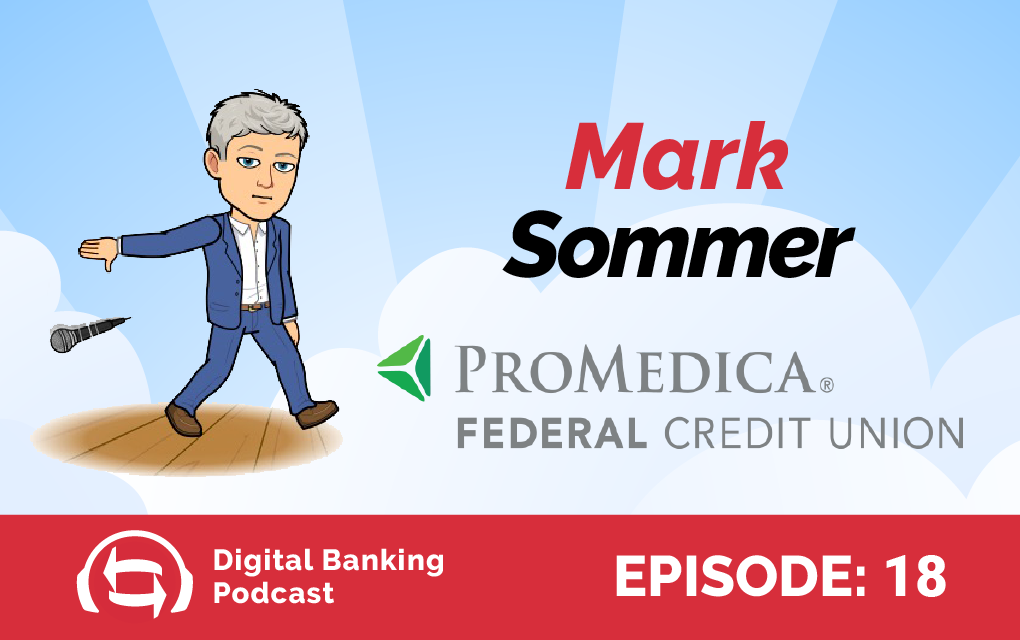Small, But Mighty: Why Credit Unions Have a Leg Up in Digital Banking
May 12, 2022
- Credit unions can’t attract the next generation of consumers by trying to sell the same value props that appealed to their parents.
- “Technology and compliance are big issues for us, and cost is going to be an issue. But realistically, I don’t believe we have a choice. Either we reach out and keep up technology-wise or we’re going to go away,” says Mark Sommer, COO of ProMedica Federal Credit Union.
- Size doesn’t have to stop you from innovating. Use small teams to your advantage to stay nimble and learn and adjust quickly to keep up with fast-changing financial needs.
According to a recent survey, 60% of U.S. adults believe a community minded financial institution is the best place for their money. But only 14% of those people believe that kind of institution has the technology they want or need to manage their money.
“The business model has changed. People’s behavior has changed,” says Mark Sommer, Chief Operating Officer for ProMedica Federal Credit Union.
That means credit unions need to do things differently; business as usual won’t work.
Mark, who shared insights on an episode of the Digital Banking Podcast, brings about 30 years of experience working in credit unions, starting as a teller and working his way up to various C-suite positions. Since 2018, he’s been with ProMedica, an employee-group-based credit union that serves roughly 7,500 health care workers at four locations.
Though it’s a small institution, with just $65 million in assets, Mark recognizes the need to provide members the technology and capabilities they can get with big FIs or online banks without losing the community and service credit unions are known for.
It’s a question of convincing younger members that ProMedica can keep up with “techie, larger banks,” he says. “Because if we can get them in as members and keep up technology-wise, we shouldn’t ever lose them.”
Mark shares what ProMedica is doing to keep up with customers’ evolving needs.

Innovation starts with culture
You might be surprised to learn that ProMedica intentionally fosters a culture of innovation.
“One of the things we have going for us here is nobody seems to really care where it [an idea] comes from,” Mark explains. “Some of my best ideas have come from the CFO or the accounting apartment. We try not to have any egos here; we just want what’s best for the members.”
Mark maintains an open-door policy with his employees. This attitude keeps team members comfortable throwing out ideas, even if they seem crazy, knowing they’ll be given a chance.
It takes time to build enough trust to make employees feel this comfortable. You can’t just tell them you want to hear suggestions. Everyone’s heard that before. You have to listen, be present and actually implement. When employees see that response, they become increasingly more confident speaking up, and your organization can benefit from diverse perspectives.

Serving the next (digital banking) generation
Credit unions are often too focused on figuring out how to turn on younger generations to their current value proposition. This gets it all wrong.
“We need to learn how to deliver our services to that generation in the method they want,” Mark says. “What’s changed over the last year [of the pandemic] is it’s not just that generation now. It’s all generations that are more used to the digital environment.”
You’re not going to convince the next generation of consumers to be as invested in the local credit union as their parents and grandparents were. They’re not looking for a personal interaction with their favorite teller or a familiar branch.
Instead of trying to pull the digital generation away from digital banking and into your lobby, figure out how to provide the community and user experience on the digital platform.
And that means capturing kids at a younger age. If they have cell phones and get comfortable using Venmo when they’re 12 years old, you have to capture them before they’re 12, or you’re going to have a hard time pulling them away from a platform they’re comfortable with.
“Digital moves at the speed of digital,” Mark says. “It’s a new environment, and it’s not like before. You don’t get your postcard in the mail this month.”
Humanizing the digital banking experience is all about making it feel as natural as possible. It’s about using technology, not for technology’s sake, but to make a difference for credit union members, FI employees, and the community.
Staying nimble to meet evolving banking needs
Although vendors and consumers might assume a credit union’s size excludes it from participating in technology, Mark points out this can be an advantage.
“We’re small enough to pivot quickly and make decisions without a lot of committees, and that’s going to help us going forward, because technology is changing so quickly,” he says.
That’s vital in a world where just six months can make one type of technology obsolete. You don’t have time to waste making the decision.
You also can’t wait for consumers to come to you asking for features. By the time they do, you’re already behind. Small FIs can no longer afford to let big banks or technology companies handle the customer education for new technologies. Once something is available, customers will learn about it. If you don’t have it, they’ll find it somewhere else.
“It’s an instant gratification society,” says Mark, “and we need to keep up.”
Leveraging a small team
Your members don’t care about the size of your institution. Their financial needs are the same whether they deal with a small credit union or a national bank.
So how do you accomplish that if you are a small credit union?
Again, Mark sees his company’s size as a benefit. His team of 22 can be nimble and straightforward. An institution like Bank of America, for example, with something like 6,000 software developers alone has “too many cooks in the kitchen,” Mark says.
“It’s easier [for us] because we don’t have all these people. We don’t have all these layers,” he says. “But it takes more work on an individual basis.”
ProMedica also benefits from decades of experience. Among its three senior executives, it has combined nearly 80 years of credit union experience with about 40 core conversions under their collective belt.
They also benefit from working in a tight-knit industry.
Mark isn’t afraid to lean on the network of contacts of credit union leaders he’s built over 30 years in the business.
“I have no problem reaching out and leaning on them and taking other people’s advice,” he says. “So it’s not only the 22 employees we have; it’s this infinite credit union family.”
This community minded approach, combined with a dedication to member service and a culture of innovation, keep Mark optimistic about the future of credit unions.
“You just have to jump and then be willing to change tomorrow,” he says. “It’s not the credit union way in the past, but it’s the way we have to be now. We can’t be married to ideas and stick with them, because the world and the environment are changing so quickly.”






